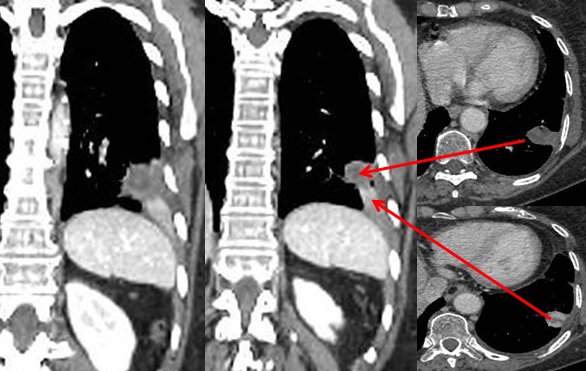中心密度低与冠扫低密度针道相一致。
肺下肺病变有时颇具挑战性
1. Alberti N,et al . Diaphragmatic Hernia After Lung Percutaneous Radiofrequency Ablation: Incidence and Risk Factors. Cardiovasc Intervent Radiol. 2014 Feb 12 2. Knuttinen MG, et al. Unintended thermal injuries from RFA: organ protection with an angioplasty balloon catheter in an animal model. J Clin Imaging Sci. 2014 Jan 30;4:1. 3. Kim YS, et al RFA of the liver in a rabbit model: creation of artificial ascites to minimize collateral thermal injury to the diaphragm and Stomach. JVIR. 2006 Mar;17(3):541-7 4. Iguchi T, Hiraki T, Gobara H, Mimura H, Fujiwara H, Tajiri N, Sakurai J, Yasui K, Date H, Kanazawa S. Percutaneous radiofrequency ablation of lung tumors close to the heart or aorta: evaluation of safety and effectiveness. J Vasc Interv Radiol. 2007 Jun;18(6):733-40. 5. Steinke K1, Arnold C, Wulf S, Morris DL. Safety of radiofrequency ablation of myocardium and lung adjacent to the heart: an animal study. J Surg Res. 2003 Oct;114(2):140-5. |


